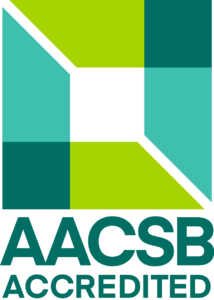Slovak-Russian syntactic and lexical parallels
- Credits: 10
- Ending: Examination
- Range: 16sC
- Semester: summer
- Year: 1
- Faculty of Applied Languages
Teachers
Included in study programs
Teaching results
Knowledge:
• Knowledge of basic concepts such as synonymy, homonymy, paronymy.
• Knowledge of symmetric-asymmetric relations in the syntactic and lexical system of the Slovak and Russian languages in a comparative plan.
• Understanding the relationships between syntagms and syntagmatic connections, polysemy, synonymy and homonymy.
Competencies:
• The student can distinguish between different types of syntagia and find cross-linguistic parallels between them.
• The student can distinguish between synonymy, homonymy and paronymy and determine the degree of agreement of homonymy based on the cross-language Slovak-Russian comparison.
• The student can effectively search for cross-language homonyms in lexicographic sources, can create a list of frequent cross-language homonyms and search for suitable translation equivalents. He can practically combine the mentioned lexical units into syntagia according to the type of text from the point of view of the lexical means of the given style.
• The student can identify interlingual homonyms in the text, but also interpret them correctly for the needs of possible interpreting and translation practice.
Skills:
• The student uses various lexical means of synonymy and homonymy when working with the text and reliably constructs them into syntagmatic phrases.
• Independently, expediently and practically uses all means of available classic and modern (electronic) lexicography for the purpose of practical analysis of text with incorrectly used lexical means and independently corrects irregularities in the sentence structure of the text.
• He uses a varied vocabulary in his speech and adheres to the standards of contemporary literary Slovak and Russian languages when constructing the text.
Indicative content
• Types of syntagia in the Slovak and Russian languages. Similarities and differences.
• Sentence structures in Slovak and Russian languages. Similarities and differences.
• Intralingual and interlingual homonymy.
• Interlingual homonymy and paronymy.
• Interlingual homonymy as a translational problem.
• Analysis and creation of texts of different stylistic levels focused on homonymous cross-language parallels.
Support literature
Základná literatúra:
1. Dubičinskij, V. V. Mežjazykovyje leksičeskije omonimy. Moskva/Charkov. 1993. 258 s.
2. Lobkovskaja, L. P. O poňatii mežjazykovoj omonimii. K probleme termina ložnyje druzja perevodčika. In: Vestnik Čeľabinskogo gosudarstvennogo universiteta, 2010, 67, s. 79 – 87.
3. Grebeneva, J. N. Slovar omonimov i omoform russkogo jazyka, 2011. Moskva: Ajris-Press.
Doplňujúca literatúra:
1. Orgoňová, O., Bohunická. A. Lexikológia slovenčiny, 2011. Bratislava: Univerzita Komenského.
2. Grigorjanová, T. K voprosu o mežjazykovych omonimach v slavianskich jazykach (na materiale slovackogo, češskogo i russkogo jazykov). In: Filologičeskij klass. God. 4, no. 42, 2015, s. 23 – 26. Jekaterinburg: Uralská štátna pedagogická univerzita.
3. Gajarský, L. Rusko-slovenská medzijazyková homonymia, 2021. Brno: Tribun EU.
4. Gajarský, L., Grigorjanová, T. Učebnica rusko-slovenských homoným, 2020. Brno: Tribun EU.
5. Gajarský, L., Grigorjanová, T. Slovník rusko-slovenských homoným, 2019. Brno: Tribun EU.
Requirements to complete the course
The final evaluation is based on the elaboration of the project plan (40%) and the final work (60%).
Student workload
260 hours (10 ETCSx26 hours)
Consultations: 16 hours
Preparation for consultations: 26 hours
Assignment processing: 108 hours
Final study processing: 108 hours
Consultations for the final study: 2 hours
Language whose command is required to complete the course
Russian, Slovak
Date of approval: 17.01.2025
Date of the latest change: 16.12.2023

